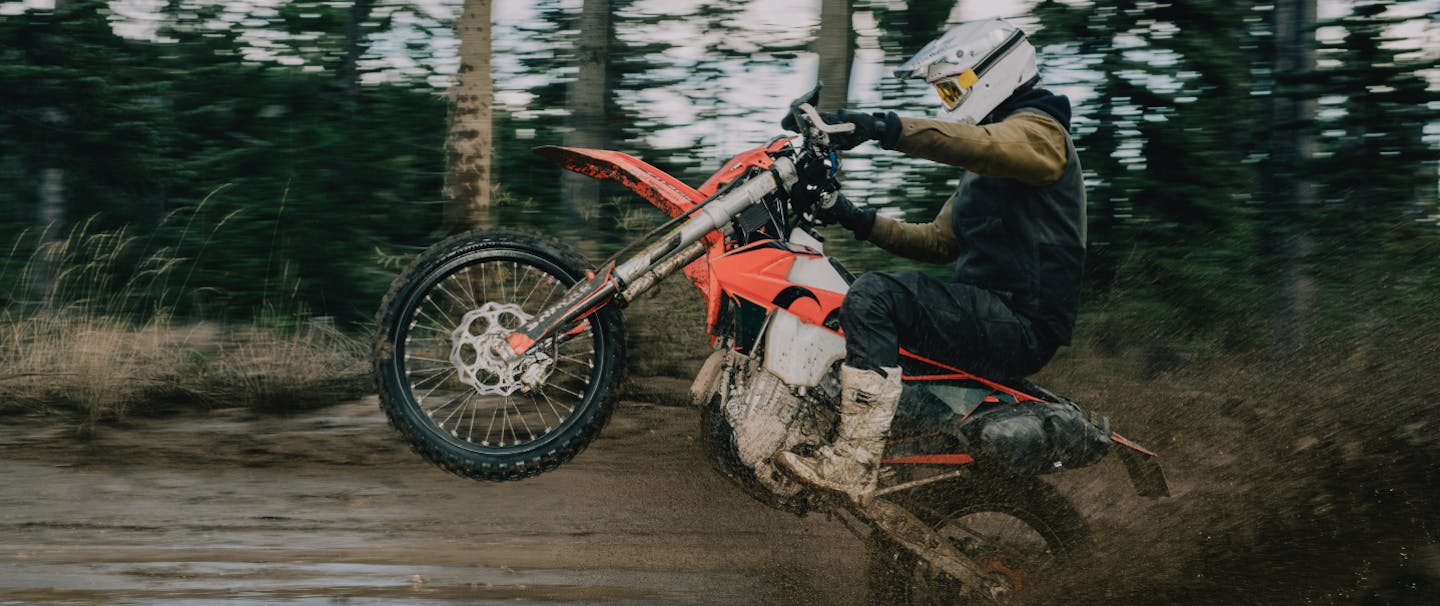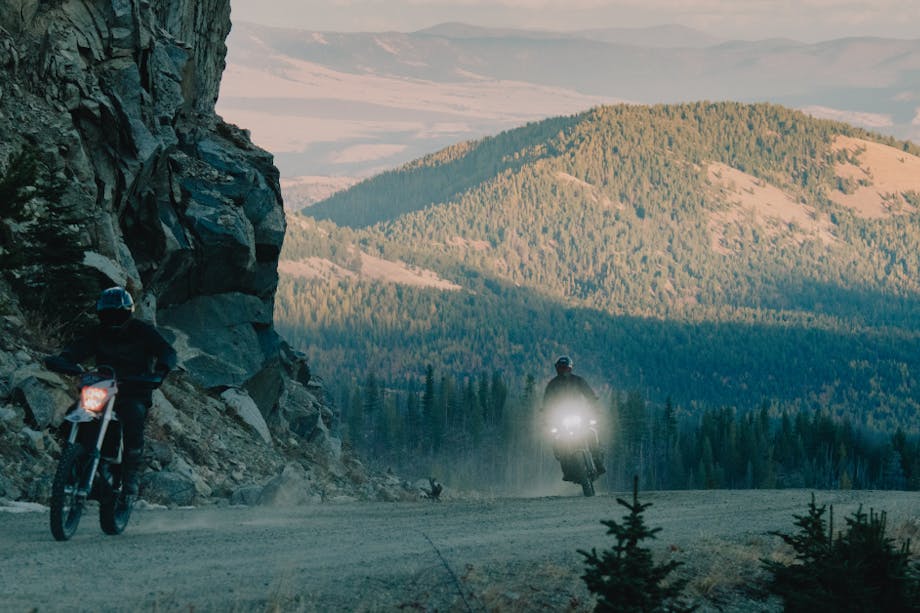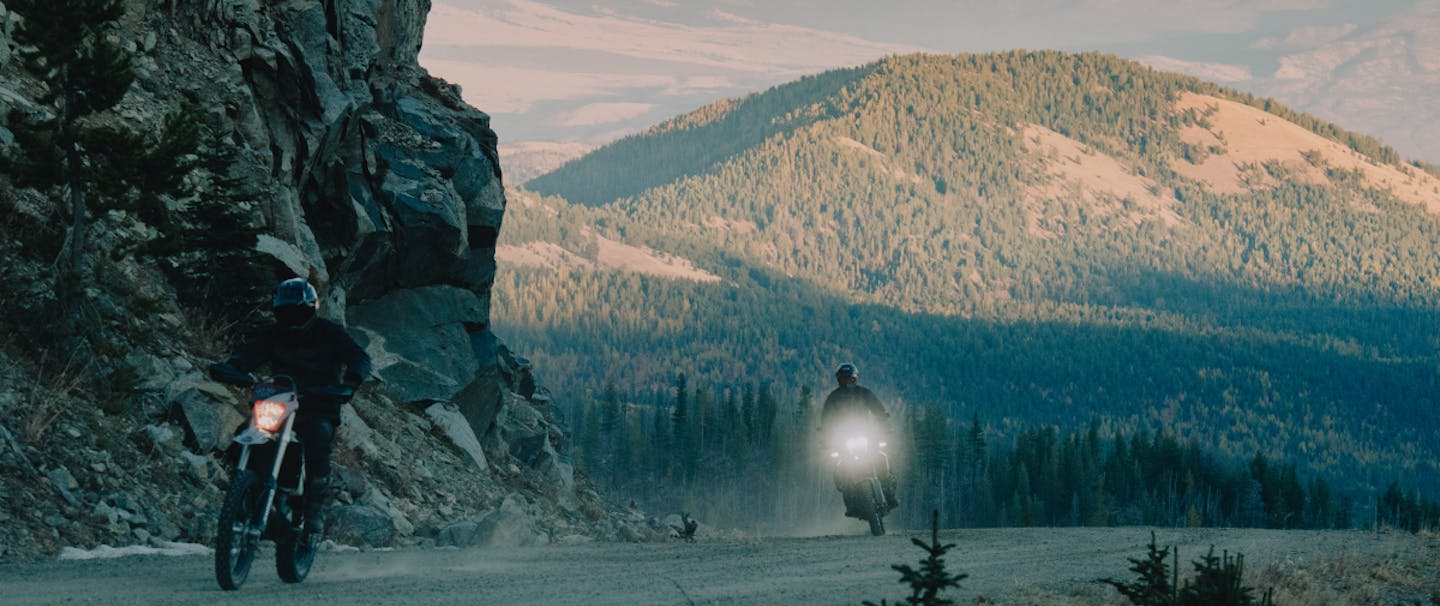Exploring our national and state lands is becoming increasingly popular among people who seek to unplug and connect with the outdoors. The Backcountry Discovery Routes (BDR) system of Forest Service roads is a great way to begin experiencing remote public lands via the planned routes they’ve created. Knowing where to get fuel and supplies, and being alerted if sections are closed, takes some of the unknowns out the equation for those getting into adventuring, as well as seasoned riders. While most of these roads are accessible via two wheels or four, proper off-road tires, high ground clearance, and some experience traversing dirt, mud, and gravel are recommended. These routes are ever-changing based on weather conditions, and not knowing what you will come across is part of the adventure.
We spoke with Aaron Piazza, group leader on our journey along the Washington Backcountry Discovery Route, about some of the essential pieces of kit that he recommends for backcountry riding. Below he shares his experience with our new Filson Alcan gear, along with advice for what to pack on a multi-day overland moto trip.
WATCH THE FULL FILM
“After years of multi day overland trips, these are some of the best items I’ve found.”
— Aaron Piazza
BASE LAYERS:
Prioritize comfort and durability are here—it’s what’s against most of your skin all day. In my opinion, wool is the perfect material for all our base layer needs. Its ability to wick moisture, resist bacterial growth, and keep you warm while still allowing breathability make it the perfect material. I wear wool socks, boxer briefs, thermals, and shirts—depending on the season I may use light, mid, or heavyweight wool versions of the items listed below.
- Merino socks: Light or heavy, depending on the season.
- ExOfficio boxer briefs
- Merino thermals (i.e. 280G MERINO TOP & 280G MERINO BOTTOM): These are great for riding and sleeping in, and whenever you just need a little extra warmth.
- WATCH CAP BEANIE: Sourced and made in the U.S.
RIDING GEAR:
When selecting your riding gear, protection and durability are crucial to keeping the adventure going. Depending on the trip, I may also choose to wear armor under my clothing. I prefer to wear armor separately because it ensures the armor is attached to my body and in the correct position to best protect me, and it can be removed if desired. Below is a combination that works well in either case.
- Sidi Adventure 2 boots or FILSON X DANNER GROUSE BOOTS: Depends on the trip and level of protection desired, but either way you are looking for waterproof boots with firm soles and ankle protection.
- Leatt Body Protector AirFlex Stealth & Leatt Knee Guard AirFlex Hybrid: Optional protection under my riding gear for more serious expeditions.
- OUTFITTER SOLID POCKET T-SHIRT: Over the thermal, this burly pocket tee can handle endless adventures. Mine are going on three years strong and only looking better with age.
- ALCAN DOUBLE FRONT PANTS: This pant is spacious enough to fit knee pads under and still fit over the boot, while fitted enough to not snag on the bike or flap in the wind. The 100% CORDURA paneling in high-wear areas and zippered pockets are nice touches for riding pants you can still hike in.
Riding Jacket:
Probably the single most important piece of gear you can pick. One is never enough, so below are two options I like using depending on the conditions.
- ALCAN CANVAS CRUISER: I recently spent multiple days with this jacket on the Washington BDR and was very pleased with its performance. Like the ALCAN DOUBLE FRONT PANT, its heavyweight canvas with CORDURA ballistic nylon paneling in high-wear areas provided protection from the wind and freezing temps. Zippered pockets kept my personal effects secure, and the longer sleeves were critical for added coverage from the elements.
- ALCAN CANVAS VEST + TIN CLOTH SHORT LINED CRUISER: This is another great riding combo I’ve been utilizing. The tried and tested durability of a waxed cotton tin cloth combined with the Alcan vest is a great option that adds versatility and durability. Like the jacket, the Alcan vest has moleskin-lined pockets, DWR coatings, and a drop-tail design.


ORIGINAL LINED GOATSKIN GLOVES:
Comfortable, tough and warm—these gloves look better the dirtier they get. I’ll also pack Dainese Scout 2 GORE-TEX Gloves as backups as these armored waterproof insulated gloves work in the rain and snow.

Rain & Snow Gear:
DWR and heavyweight materials can only get you so far. Unless I’m riding midsummer, I always carry an emergency rain shell to ride in over my riding gear.
- SKAGIT RAIN JACKET: this has been a lifesaver on the last few adventures. Waterproof and breathable, this jacket has Neoprene cuffs and YKK® AquaGuard® zippers that seal out the wind and rain while riding.
- SKAGIT RAIN PANT: full-length side zippers for easy on/off over boots and CORDURA® nylon-reinforced cuffs and lower inner legs reinforce wear points that contact the bike, making these the perfect pant for riding motorcycles in the rain or fishing your favorite stream.
Helmet:
For most of my riding I personally wear a hand-painted Arai XD4 helmet—this is one of the best overall dual-sport helmet on the market. On the recent Washington Backcountry Discovery Route trip I used the FILSON X BELL MX-9 ADVENTURE MOTORCYCLE HELMET and wouldn’t have any hesitation wearing it again. This dual-sport helmet is comfortable on-road or off, and Bell’s tough polycarbonate shell with MIPS technology disperses and manages linear and rotational impact energy. The scratch-resistant, anti-fog visor flips up with just enough room for a pair of goggles, and detaches easily to switch colors or tint.






